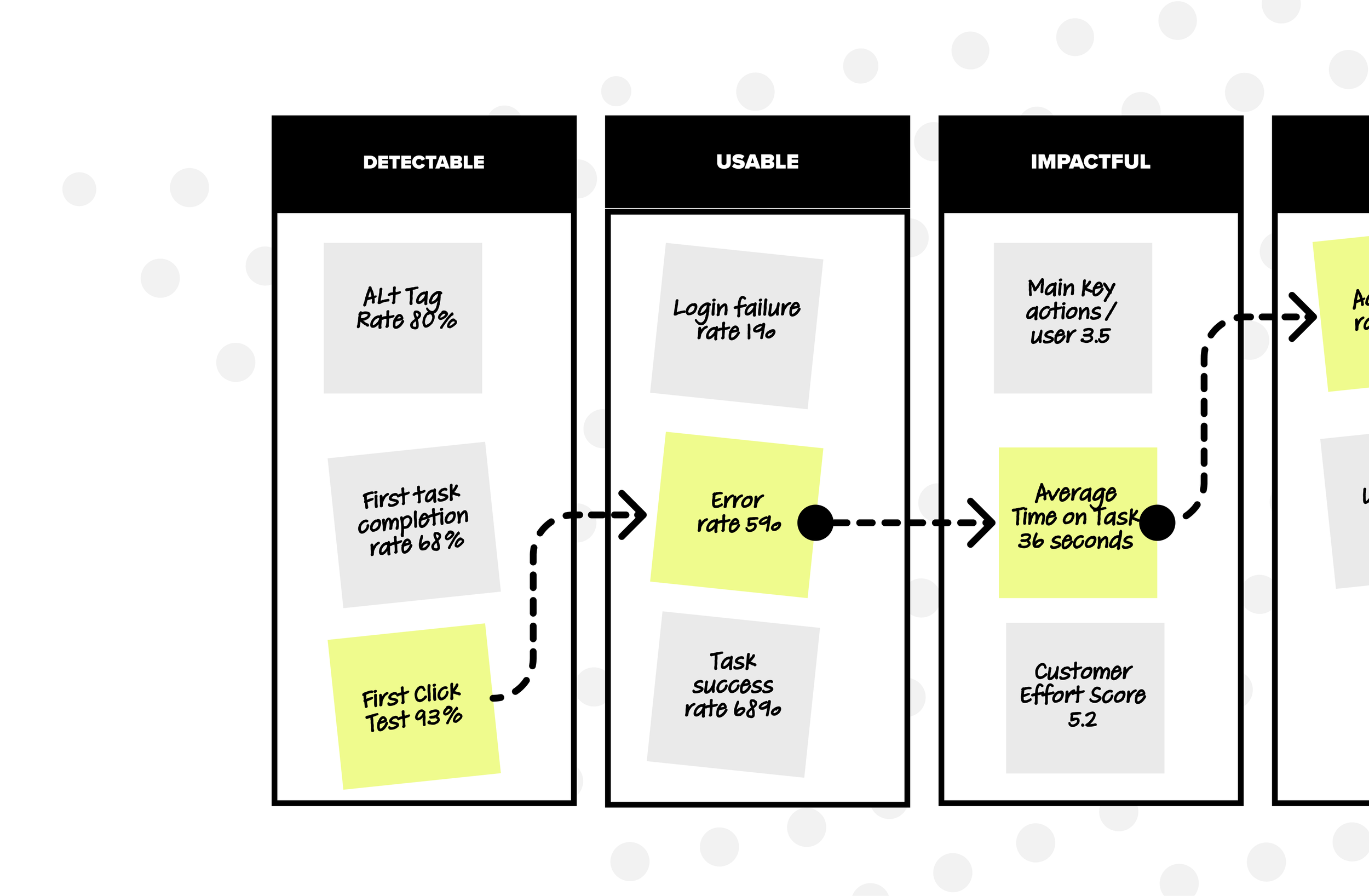A course to help you use metrics to raise product quality
Measure Desirability - Track and Monitor Progress - Mature Product and Services - Create North Star Maps
As a design leader, you know measuring is essential. Conceptually, you understand OKR, KPI, or North Star frameworks but struggle to implement them in actionable and tactical ways. You know the metrics your product and business partners use are essential, but they are not helping you or your teams figure out what to do next. You need a new approach. Learn what it means to measure, track, and connect how you deliver desirable experiences to your customers and demonstrate the impact of design as a practice and team for your company.

In this course, you’ll make North Star Maps
Who is this for?
Managers, Directors, Operators, and Executives
Program goal
Demonstrate your impact with data and bets. Learn how to set up measurable objectives and metrics from scratch. Discover the difference between Functional Unit and Product health. Create North Star Maps to visualize how the work aligns with the outcomes.
Topics Covered
North Stap Maps
Discover how to build a North Star Map for your area. Use visualizations to show the relationship between the important metrics in your business, from the overall goal all the way down to all the targets, decisions, and bets that influence it.
Strategy Maps
Strategy Maps show the relationships between organizational objectives through underlying quality perspectives. They’re a popular tool for describing and visualizing business strategies at companies large and small. Strategy Maps connect objectives and metrics of company health to each other, so anyone in an organization can see how their align aligns with the big picture.
POKRs
Perspectives, Objectives, and Key Results (POKRs) is a goal-setting methodology that adds an additional element (perspectives) to a traditional OKR methodology, creating a logical, cause-and-effect connection between strategic objectives. The framework helps individuals or teams think about different quality factors when making decisions so they can intentionally track and measure those factors. Quality factors may include accessibility, ease, equity, beauty, sustainability, etc.
The Balanced Scorecard
Developed in the early 1990s, The Balanced Scorecard approach gives senior leaders a good idea of how well the organization is doing. Learn why this concept is important and how you can introduce similar concepts for the design practice.
Meet your Instructor
Ryan Rumsey
For 20+ years, Ryan worked as a designer and executive at Apple, Electronic Arts, USAA, Nestlé, and Comcast. He is also the author of Business Thinking for Designers.
Ryan spent 10+ years as the senior design leader charged with building and scaling design organizations.
For the last four years, Ryan has been teaching design executives, leaders, and teams as CEO of Second Wave Dive and lead instructor of CDO School.






